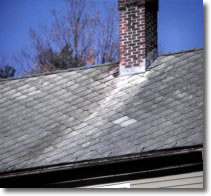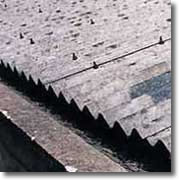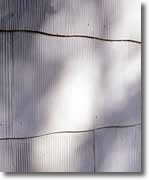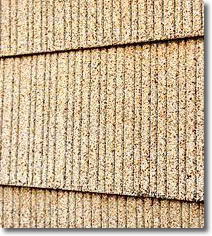Asbestos
- Asbestos Home
- Did You Know
- Enforcement
- Professionals
- Asbestos Contractor Search
- Asbestos Individual License Search
- Asbestos Licensing
- Floor Tile Removal
- Homeowner Information
- Laboratories
- Products Containing Asbestos
- Schools
- Work Practices
- File a Complaint Related to Asbestos
- Minnesota Statutes and Rules
- Resources
- Contact us
Related Topics
Environmental Health Division
Roofing and Siding
Asbestos
What home roofing and siding products contained asbestos?
In the past, asbestos fibers were added during the production of roofing and siding materials to strengthen them, to increase their durability, and to provide a limited amount of insulation and fireproofing to your home. The use of asbestos in roofing and siding materials has declined rapidly since the early 1980s.
The following roofing and siding products have commonly been found in Minnesota homes:
Roofing Products
|  |  |
Siding Products
|  |  |
How do I know if my roofing or siding contains asbestos?
Look for asbestos markings on the roofing or siding material, its packaging, or call the manufacturer. Another alternative is to hire a Minnesota certified asbestos inspector to sample the material and submit it for laboratory analysis. You can find companies that perform asbestos sampling at Asbestos Contractor Search.
If you decide not to check for asbestos, you should assume the material contains asbestos and treat it accordingly.
Do I need to remove asbestos roofing and siding?
No. Just having asbestos siding and roofing on your home does not pose a hazard to your health. Asbestos-containing roofing and siding in good condition are best left alone. Damaged roofing and siding should be carefully repaired. Sometimes asbestos-containing roofing and siding can be covered with new materials. Check your local building codes.
Is working with asbestos roofing and siding hazardous?
Asphalt or cement roofing and siding that contain asbestos, when intact and in good condition, are generally considered nonfriable and are not hazardous. "Nonfriable" means they cannot be broken up by hand pressure. Paper-like vapor barriers can present more of a hazard, since they are considered friable. "Friable" means they are easily damaged by hand pressure.
However, heat, water, weathering or aging can weaken "nonfriable" siding and roofing to the point where they are considered friable. Also, the siding and roofing can be made friable when it’s being removed. Friable materials can release asbestos fibers into the air. Avoid breaking, sanding, cutting, drilling and sawing the materials. These types of activities can release asbestos fibers into the air. Once airborne, asbestos fibers can be inhaled into the lungs, where they have the potential to cause severe lung diseases, such as mesothelioma and lung cancer.
How should asbestos roofing and siding be removed?
MDH strongly recommends using a Minnesota licensed asbestos contractor to remove the siding or roofing. Licensed contractors use equipment and techniques that are unavailable to homeowners, so the asbestos is handled safely, protecting you and your family.
How do I find out more information?
For more information about asbestos, contact the Asbestos Program at MDH through the internet or by telephone at (651) 201-4620.
Go to > top